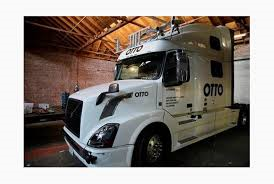
Breaking News
 Battleborn Batteries Responds! Their Overheating Device is a "Feature" not a "Problem
Battleborn Batteries Responds! Their Overheating Device is a "Feature" not a "Problem
 Actor Liam Neeson Outs Himself as MAHA After Narrating Pro-RFK Jr. Documentary Slamming...
Actor Liam Neeson Outs Himself as MAHA After Narrating Pro-RFK Jr. Documentary Slamming...
 Kyle Rittenhouse announced on social media Wednesday that he has tied the knot.
Kyle Rittenhouse announced on social media Wednesday that he has tied the knot.
 JUST IN: President Trump Grants Tina Peters Pardon
JUST IN: President Trump Grants Tina Peters Pardon
Top Tech News
 Build a Greenhouse HEATER that Lasts 10-15 DAYS!
Build a Greenhouse HEATER that Lasts 10-15 DAYS!
 Look at the genius idea he came up with using this tank that nobody wanted
Look at the genius idea he came up with using this tank that nobody wanted
 Latest Comet 3I Atlas Anomolies Like the Impossible 600,000 Mile Long Sunward Tail
Latest Comet 3I Atlas Anomolies Like the Impossible 600,000 Mile Long Sunward Tail
 Tesla Just Opened Its Biggest Supercharger Station Ever--And It's Powered By Solar And Batteries
Tesla Just Opened Its Biggest Supercharger Station Ever--And It's Powered By Solar And Batteries
 Your body already knows how to regrow limbs. We just haven't figured out how to turn it on yet.
Your body already knows how to regrow limbs. We just haven't figured out how to turn it on yet.
 We've wiretapped the gut-brain hotline to decode signals driving disease
We've wiretapped the gut-brain hotline to decode signals driving disease
 3D-printable concrete alternative hardens in three days, not four weeks
3D-printable concrete alternative hardens in three days, not four weeks
 Could satellite-beaming planes and airships make SpaceX's Starlink obsolete?
Could satellite-beaming planes and airships make SpaceX's Starlink obsolete?
Startup wants to put self-driving big rigs on US highways

To many, that might seem a frightening idea, even at a time when a few dozen of Google's driverless cars are cruising city streets in California, Texas, Washington and Arizona.
But Anthony Levandowski, a robot-loving engineer who helped steer Google's self-driving technology, is convinced autonomous big rigs will be the next big thing on the road to a safer transportation system.
Levandowski left Google earlier this year to pursue his vision at Otto, a San Francisco startup the he co-founded with two other former Google employees, Lior Ron and Don Burnette, and another robotics expert, Claire Delaunay.
Otto is aiming to equip trucks with software, sensors, lasers and cameras so they eventually will be able to navigate the more than 220,000 miles of U.S. highways on their own, while a human driver naps in the back of the cab or handles other tasks.
For now, the robot truckers would only take control on the highways, leaving humans to handle the tougher task of wending through city streets. The idea is similar to the automated pilots that fly jets at high altitudes while leaving the takeoffs and landings to humans.
"Our goal is to make trucks drive as humanly as possible, but with the reliability of machines," Levandowski says.

 First totally synthetic human brain model has been realized
First totally synthetic human brain model has been realized Mach-23 potato gun to shoot satellites into space
Mach-23 potato gun to shoot satellites into space

